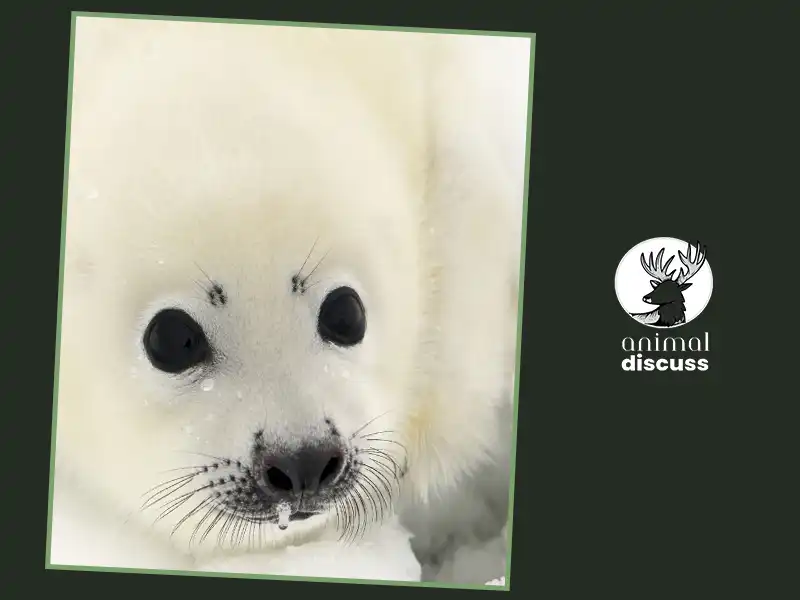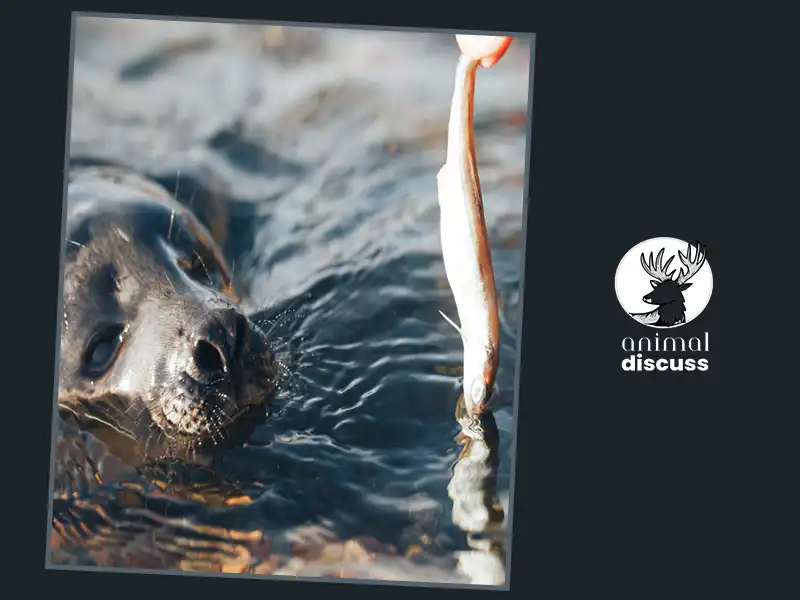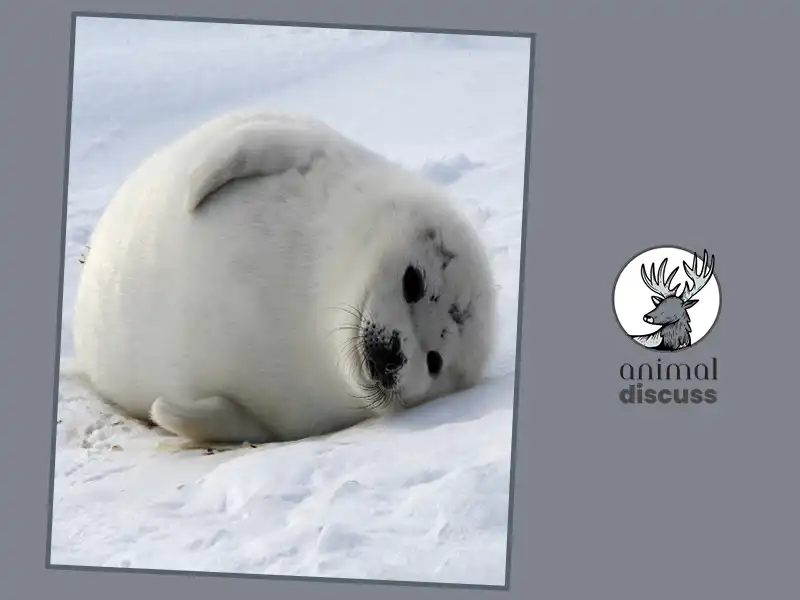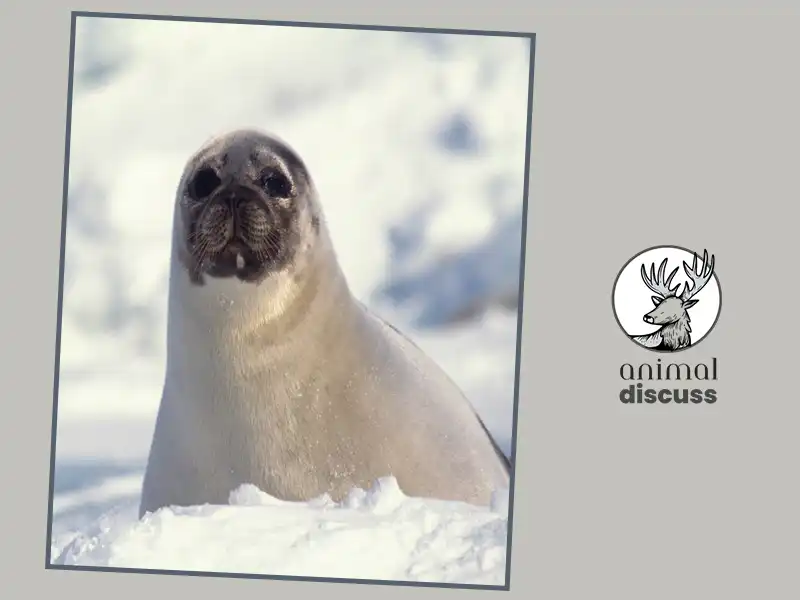Harp seals are not just diver and swimmer animals; rather, they make a remarkable contribution to nature. Well, what does it do for nature? Through swimming, it creates a current in the water. As a result, the nutrients of the sea get even on the shore.
You will be able to see their characteristics, behavior, appearance, etc. in this article, which will expand your knowledge about them. The overview of the harp seal gives deep insights about how they are different from other animals.
Curious to know more exciting details about harp seals? Let’s have a glance at their unique features which make them social and communicative in all under one article.
What Are the Fundamental Features of Harp Seal?
Before digging further detailed information, you can have a look at some interesting facts that will tell you more about the harp seal’s physical attributes –
| Harp seal features | Some facts |
|---|---|
| Scientific name | Pagophilus groenlandicus |
| Communication | Makes underwater sounds |
| Size | 5 to 6 feet long |
| Weight | 260-300 pounds |
| Other names | Saddleback seal or Greenland seal |
| Average lifespan | 25-40 years |
| Color | Silver gray and has a black harp on the back |
| Diet | Carnivores |
| Habitat | North Atlantic and Arctic Oceans |
| Reproduce | 1 pup per year |
| Remain in underwater | About 16 minutes |
| IUCN Red list | Least concern (LC) |
What Comes Under the Distinguishing Characteristics of Harp Seal?
Harp seals are a bit different from other seals which show in their appearance too. Beginning with their distinctive markings placed in the back resemble a “harp” seal which is missing in other seals.
Moreover, the pup harp seals, when they are born, have fluffy white colored fur compared to other seals who have yellow fur. This white fur assures them warmth while they are born and also it soaks in sunlight too.

But as the harp seals are grown, their coating color changes to a more silver-gray color from the white color fur.
However, have you ever wondered about their size? Well, we know that seals can be 7 feet long, right? But comparatively, harp seals are medium-sized, 5 or 6 feet long. Even their weight varies too.
In nature, their lifespan might range from twenty to thirty-five years. Even forty years of age is possible for some individuals!
Now, if we talk about weight, they acquire weight quickly and weigh about 11 kg (24 pounds) as babies.
Providing a shorter table for your better understanding-
| Weight | In kg |
|---|---|
| Pup harp seal | Around 11 kg |
| Young harp seal | 50-80 kg |
| Adult harp seal | 117-136 kg |
How Is the Harp Seal Different from Other Seals and Animals?
There are a number of unique characteristics that set harp seals apart from all other seals and animal species. Here are a few key distinctions-
- One distinctive feature of this harp seal is they’ve small and flat heads whereas the other seals have rounder heads.
- Another thing that makes the harp seal different is their highly social attitude. But this social attitude only reflects when the time of breeding or molting arises. At that time, they loved to live in mass colonies.
- Even harp seals are more vocal too when it comes to communication. They chatter, growl and even bark sometimes, which you will not see in other silent seal species.
- Moreover, as with the majority of seals, their thick coat of fat helps them maintain a comfortable body temperature in the frigid Arctic waters. Not many creatures can match their fins’ ability to circulate blood, which allows them to retain even more heat.
- Not many seal species go on such lengthy migrations as harp seals do each year. They travel up to 3,100 kilometers in search of food.
What Does a Harp Seal Eat?
Mainly harp seals are carnivorous. Their entire eating habit depends on and also varies from season to season and to the availability of food.

Due to being carnivorous, they completely rely on either fish or invertebrate animals. For instance, in the summer season, there are more krill available which are less found in winter. Thus, in winter they depend on conserving energy.
Even you’ll be astonished to hear that the pups depend fully on their mother’s milk as they cannot rely on any solid food. But just after a few weeks, they are left to hunt, so that they can grow bigger and find out their own prey.
However, if you are interested in more specific details on what fish they eat or what type of fish they eat, kindly check out the article “Breaking Down the Food Habit of Harp Seal” in my blog.
How Does the Harp Seal Conserve Energy in A Frigid Climate?
Harp seals are very much used to frigid climates being inhabitants of the North Atlantic and Arctic Oceans. Thus, as the prey is less available in that weather, they need to conserve energy. But how do they do that?
We can understand this by dividing their activities into some sections. Such as by reducing their everyday activity.
Like when they enter a partly inactive condition and move less, their daily energy expenditure drops significantly. As a result, they are able to survive the winter months with less food.
Accordingly, while they hunt, it is more efficient to wait for prey and use attack techniques rather than aggressively pursue them. This strategy is particularly useful when the prey is dispersed and there aren’t many of them.
Another interesting way is to prepare for winter by storing fat. It is crucial since it provides energy even when food intake is low.
Besides, whenever possible, just like us, they lie down in the sun to absorb the rays of the sun. This reduces their need to generate energy internally, which frees up energy for more vital activities, like hunting.
Lastly, changes are noticed in order to conserve energy, such as reducing the amount of non-essential grooming and other activities. This ensures that they can hunt their small winter prey with sufficient energy.
What Are the Behavioral Habits of Harp Seals?
Well, we must say that this sociable, communicative creature has all those good behavioral habits that many animals lack.
In their breeding season, the male harp seal competes for owning the territories whereas the females are seen in showcasing their vocal capabilities.
The female one does vocalize by growling or barking. In that way, they ensure contact with their pup or attract their opposite potential mates, etc.

They migrate a lot, especially during the summer when they want to release themselves from the bulk of the ice. As a result in summer, they head towards the Arctic, Greenland. Whereas, in winter they migrate to the south for breeding.
Just after their breeding, they focus on molting which requires them to move out from the ice. And they shed their previously matured fur and start the process of growing a new coat of fur.
They are fond of frequently engaging with the younger generation. Their engaging activities include playing, fighting, and chasing other pups.
Moreover, they occasionally swim up to boats or dive simply to see what’s happening, which contributes to their reputation for being inherently curious.
However, other than all of this, most of their time is spent in open water. They dive for food or rest on ice floes when they aren’t reproducing or molting.
If you are interested in more specific details on harp seal behavior, kindly check out the article in my blog.
Where Is the Habitat of The Harp Seal?
Pack ice, large expanses of constantly melting sea ice is where they spend the vast majority of their life. Because of this, they are known as pack ice seals.
Coming to the distribution, you can find them mostly in the subpolar areas such as the North Atlantic and Arctic Ocean. Mostly, they live on the ice edge where the melting water of the open sea meets with the ice.
Harp seals use this ice for all purposes such as breeding, molting, and even resting. But for traveling and eating purposes, they roam around in open water.
However, their seasonal movements of habitat are noticed too. In order to get food in the Arctic Ocean, they travel farther north in the summer. Whereas they return to their breeding grounds in the south during the winter.
If you are interested in more specific details on harp seal habitat, kindly check out the article in my blog.
How Does Harp Seal Reproduce?
When compared to the reproductive cycles of other animals, harp seals’ cycles are remarkably unique. It happens in the Arctic during a harsh winter on the pack ice. The key procedures are outlined below:
Harp seals’ reproductive cycle starts in the late winter or early spring which is basically in the season from February to March. In these seasons, they gather in bulk and create a mass community of breeding.
That’s when the journey starts; males start to compete for their own territories. Just after the competition, the mating process began in the water. As females are polyandrous, they mate with multiple mates and start reproducing.
For around 7.5 months, the female harp seals remain pregnant and deliver the whitecoat fur ball-like pups. And as a little one, it requires approximately twelve days of feeding. Thus, by the time a child reaches the age of 10, both sexes are fully developed.
Females reach a weight of 120 kg and a length of 1.8 meters. But the size difference between the sexes is slight. In addition, their harp marks are more prominent, and their heads are darker.
Likewise, a female harp seal when becomes of age 5 or 6 years old, engages in the process of reproduction. And welcome the next generation! Thus, the cycle continues.
Conservation Of Harp Seal
Harp seals are the least concerned species. However, several initiatives aim to preserve harp seals by controlling hunting, preserving their natural habitat, and addressing more systemic issues, such as climate change.
Starting with habitat preservation, pacts like the CMS promote international cooperation. All along their journeys, migratory animals like harp seals are protected by this.

Moreover, harp seals have a place to call home. In order to keep their vital breeding and feeding grounds secure, MPAs (marine protection areas) are placed in strategic locations.
Most importantly, if harp seal health needs to be protected, few things can be done. Like reducing pollution levels, mostly those which are caused by oil spills and industrial waste.
Moving on, banning harp seal hunting matters, harp seal populations have benefited. Even in some nations, it has been enacted (such as Russia).
Last but not least, a mass amount of public awareness needs to be raised. Harp seals are in danger but protecting them will be easier if more people know how vital they are.
Frequently Asked Questions
I am now here to discuss the frequently asked questions on the harp seal. Let’s have a look-
01. How swift is a harp seal’s speed?
It’s about 2.16 to 5.111 kilometers per hour. This has been found in researching the forward motion of harp seals.
02. How are harp seals able to remain warm?
This is because harp seals store a lot of energy in their thick coating of fat. It keeps them warm in frigid water and allows them to fast or survive in times of food scarcity.
03. Do harp seals make friends with humans?
No. But occasionally out of their innate curiosity, seals will approach scuba divers too closely. Having said that, most humans should not expect any kindness from these wild creatures. They seldom socialize with others outside of mating and baby-making seasons.
04. When harp seals fall asleep, what do they do?
Anywhere, on land or in the water, a seal can sleep. They get some shut-eye by floating on their bellies or upright, like a fishing float. When they’re asleep, they’re not actively searching for food, so they can remain underwater for much longer.
05. What threats does a harp seal face from humans?
Due to overfishing, a huge amount of pup mortality is seen. Around 3 million seal populations have decreased. For the fur trade selling, from pups’ skins coats and other garments were made which led to this huge decrease rate.
Conclusion
Harp seals are agile aquatic swimmers who know how to glide and hunt for their survival. Their overview explains their little details which exclaim how they are as animals.
Moreover, this master of the icy world has the ability to remain submerged underwater even for 15 minutes! I have tried to cover every detail of what a harp seal is and how they live etc. Hope you’re clarified after reading it.
References
- https://www.ifaw.org/international/animals/seals
- https://www.fisheries.noaa.gov/species/harp-seal
- https://kids.nationalgeographic.com/animals/mammals/facts/harp-seal
- https://oceana.org/marine-life/harp-seal/
- https://oceanconservancy.org/wildlife-factsheet/harp-seal/
- https://animalia.bio/harp-seal
- https://ypte.org.uk/factsheets/seal-harp/overview
- https://www.harpseals.org/about_seals/index.php

